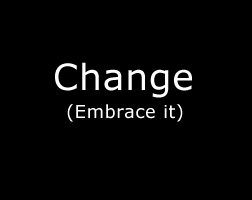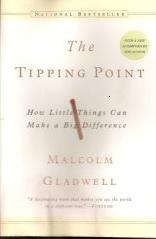31 Dec 2008
0 CommentsWho Invented the Dot in Filenames?
Who invented the dot (“.”) that precedes the file type extension, as in document.doc or metal.mp3? As we near the end of what has emerged as a most interesting year, we all could use the diversion of examining the history of something so simple and pervasive, that we all take for granted.
A note from my friend Brad Templeton reminded me that being in the right place at the right time can be profound. In fact, as strange as it sounds, Brad Templeton may well have invented the dot in “.com“, as he discusses here. As he says:
 Brad Templeton
Brad Templeton
“Indeed if it was me, it was simply by virtue of the fact that having been around at the beginning of these things, and taking an interest in these issues. Being in the right place at the right time. But it’s simultaneously mind-boggling, conceit-building and humbling to think that what I said might have sparked something that became so universal.”
This led me to ask myself, who orginated the ubiquitous dot that separates the extension, denoting file type, from the base file name. A much older concept, clearly the use of dot as an internet name separator was influenced, perhaps subconciously, from the longstanding filenaming convention.
The Windows filenames of today are direct descendents of MS-DOS which lacked tree-structured directories and restricted filenames to an 8.3 format, consisting of a maximum of 8 characters of base filename followed by up to 3 characters of an extension connoting the type of data stored in the file. MS-DOS, in turn, directly inherited this convention from CP/M, and indirectly from the UNIX family of operating systems.
I have directly worked with all of the above systems since their early days, but to go back further, I must rely on the oral history I was hearing at the time. CP/M was directly inspired by the Digital Equipment Corporation family of operating systems such as DOS-11 and RSX-11. The dot convention may well have been inherited via TOPS-10 for the DEC PDP-10 line of computers. Can anyone please confirm or deny this? At the very least, the 3 letter limitation of extension length, still common today, came from those systems which stored the extension in a 16-bit word in a format known as RAD50.
However, filename extensions separated by a dot were also a feature of Multics, which dates back to 1964.
Thus it is unclear to me whether Multics or DEC operating systems were the true originator of this concept, or whether there is an even older, perhaps common, ancestor. Can an alert reader, possibly a computing pioneer, help enlighten us on this important question.
Happy New Year to all. Wishing you all a happy and prosperous 2009.





 Now what? You’ll want to evolve a business model that helps viral adoption, yet still allows for effective monetization of your great new application. Below are the three main web-based models you may wish to consider:
Now what? You’ll want to evolve a business model that helps viral adoption, yet still allows for effective monetization of your great new application. Below are the three main web-based models you may wish to consider: 2. Free: Since the early days of the web, sites like Yahoo!, and more recently Google and Skype, based on web economics and culture offer a high level of service and utility for the amazingly low price of free. Free continues to be the pricing model of choice for consumer web users. Notwithstanding the lowered costs to provide such services, the old adage of “make it up in volume” doesn’t get you very far toward cash flow positive. That’s one of the key paradoxes of the web, how to balance consumer desire for free with the need to make money.
2. Free: Since the early days of the web, sites like Yahoo!, and more recently Google and Skype, based on web economics and culture offer a high level of service and utility for the amazingly low price of free. Free continues to be the pricing model of choice for consumer web users. Notwithstanding the lowered costs to provide such services, the old adage of “make it up in volume” doesn’t get you very far toward cash flow positive. That’s one of the key paradoxes of the web, how to balance consumer desire for free with the need to make money. 3. Freemium: As a hybrid of Subscription and Free, this model was first popularized in 2006 by
3. Freemium: As a hybrid of Subscription and Free, this model was first popularized in 2006 by 




 Jim Balsillie
Jim Balsillie Mike Lazaridis
Mike Lazaridis Reed Hastings
Reed Hastings

 Speaking of trust, a week ago a good friend lent me a fascinating book called
Speaking of trust, a week ago a good friend lent me a fascinating book called  Can We Trust Their Claims of Open?
Can We Trust Their Claims of Open?


 From that springboard, he became interested in the way fads and other changes propagate through society, especially illustrated by recent books like Malcolm Gladwell’s
From that springboard, he became interested in the way fads and other changes propagate through society, especially illustrated by recent books like Malcolm Gladwell’s  Now, let’s drill a bit deeper to understand why this is so important. Malcolm Gladwell is a (very persuasive) popularizer of complicated and transformational ideas. By contrast, Duncan Watts, associate professor of Sociology at Columbia University and author of the 2003 book
Now, let’s drill a bit deeper to understand why this is so important. Malcolm Gladwell is a (very persuasive) popularizer of complicated and transformational ideas. By contrast, Duncan Watts, associate professor of Sociology at Columbia University and author of the 2003 book
13 Jan 2009
0 CommentsAnother One Bites the Dust – and You Thought Business Was in Crisis Mode
“Another one bites the dust.
How do you think I’m going to get along,
Without you, when you’re gone”
Queen
This is a call to action where individual citizens can make a huge difference.
The recent loss of a local cultural gem, namely King Street Theatre:
Curtain Closes on Another Local Local Theatre
and the near death experience of the 87 year old cultural gem the Grand Philharmonic Choir, from cash flow challenges, has shone a spotlight on how the financial meltdown is already impacting the Waterloo area arts and cultural scene. As one who supported King Street Theatre’s original capital campaign, I feel this loss personally. Further, I am optimistic that many in our community share this sense of loss.
Many of the key funders who directly invest in our cultural sector, such as local foundations and individual donors, have seen their financial investments tank along with the rest of us. Given that 2009 contributions will largely be determined by 2008 investment returns, we are probably just seeing the tip of the iceberg.
The media cites lack of citizen interest or poor attendance as the root cause. Many business people working with social enterprises observe that many organizations lack the right management to deliver better results. While all true, I would posit that the challenges of the cultural sector are much more complex. I’m as much a believer in economic Darwinism, which dictates that in order to have real success, you also need to have failures. In fact, my recent post Playing the Lottery after the Meltdown underscores this notion in regard to the recent government led auto sector bail outs. Mark McArdle’s post What I Didn’t Get for Christmas makes an even stronger case for economic Darwinism.
That being said, much of the social sector, including arts, culture, the environment and many other social causes, have long operated in a marginal and underfunded state. This, for most organizations, trumps the above concerns about attendance or management quality. It is fortunate indeed that many community leaders met last September at the Prosperity Council of Waterloo Region: Task Force on Creative Enterprise to begin to put together a comprehensive, strategic initiative to invest in and develop our overall capabilities in the Creative and Cultural sphere. While from an early 2009 perspective, this might not at first appear to be the ideal time to launch such a big idea, we need to remember that such initiatives are long term and may need a number of years to properly gestate. Ideally, need to be ready so that our collective efforts can bear fruit in time for the next economic boom in the Waterloo area.
Meanwhile, I would call all citizens who care about the cultural future of the Waterloo area to respond with their support. While each of us may favour different organizations and ways to provide that support, we all need to do our part. The great community we live in depends on each of us to personally help to nurture and invest in its future.